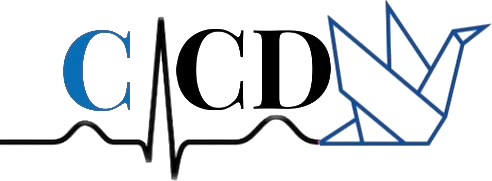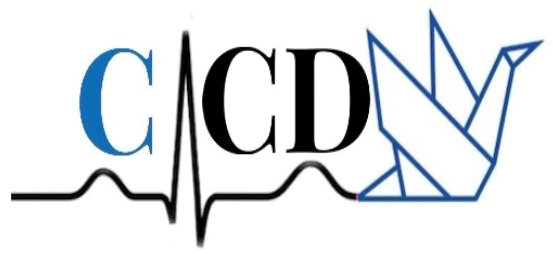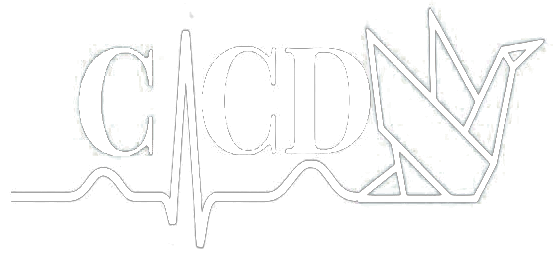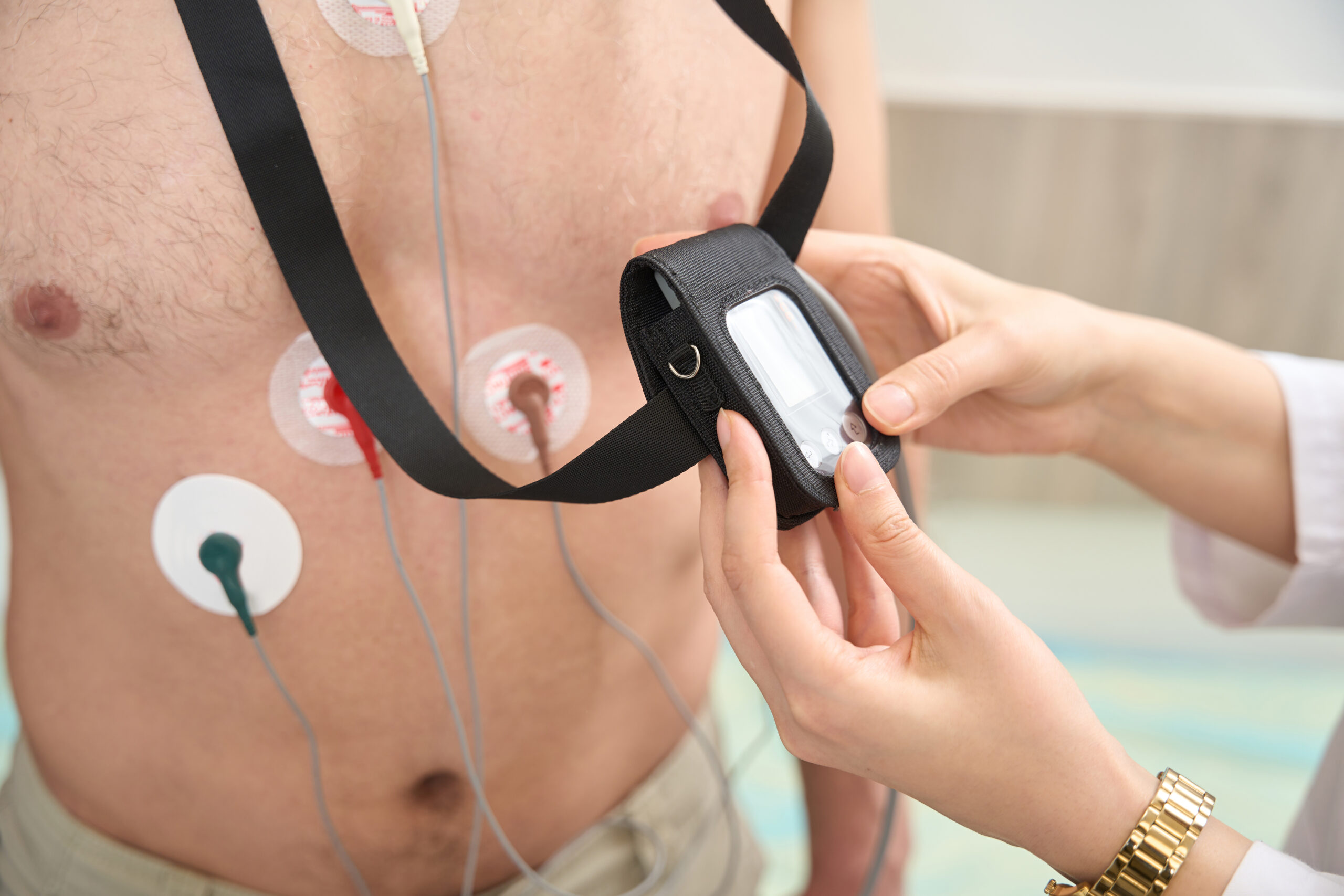
The Ultimate Guide To Sleeping With A Holter Cardiac Monitor
Sleeping with a Holter cardiac monitor is an essential part of continuous heart health monitoring for patients who need to assess their heart’s activity over an extended period. A Holter cardiac monitor is a small, portable device that tracks and records the electrical activity of the heart continuously, typically for 24 to 48 hours. This test is often used when a standard ECG might not capture irregular heart rhythms or when symptoms occur intermittently.
During the monitoring period, patients are asked to go about their normal activities, including sleeping with the Holter cardiac monitor. The purpose of this test is to capture any abnormal heart rhythms that may occur while the patient is at rest, such as during sleep, which might not be noticed during a brief visit to the clinic. For many patients, this is an invaluable way to get an accurate reading of their heart’s health without the need for frequent in-clinic visits.
Sleeping with a Holter cardiac monitor allows for more accurate, long-term data collection compared to a one-time test. For clinics, offering this service provides crucial insight into the patient’s cardiovascular health. For patients, it provides peace of mind by ensuring that any hidden heart issues can be detected and addressed. Whether a patient has been experiencing irregular heartbeats, dizziness, or unexplained fatigue, sleeping with a Holter cardiac monitor can help identify the root cause and guide further treatment options.
How Does A Holter Cardiac Monitor Work During Sleep?
Sleeping with a Holter monitor allows for continuous, 24/7 recording of the heart’s electrical activity, providing crucial insights into a patient’s heart health. The monitor works by using small electrodes that are attached to the skin of the patient’s chest. These electrodes are connected to a portable device, which records the electrical signals generated by the heart as it beats.
When a patient is instructed to sleep with a Holter cardiac monitor, the monitor continues to collect data as they rest. Unlike a standard ECG, which only records heart activity at one point in time, a Holter monitor records the heart’s activity over an extended period—often 24 to 48 hours. This helps detect heart issues that may occur intermittently, such as arrhythmias, which can be difficult to capture during a routine test.
During sleep, the monitor records heart rhythms, heart rate, and the electrical signals that travel through the heart. The Holter monitor can pick up variations that happen during different phases of sleep, such as rapid eye movement (REM) sleep, where irregular heartbeats may be more likely to occur. The monitor captures these moments and stores the information, which is later analysed by healthcare professionals.
Patients are typically asked to continue with their normal activities, including sleep, during the monitoring period. However, there are a few basic guidelines to follow, such as avoiding getting the monitor wet (e.g., showering or swimming), keeping the monitor in a safe position, and not engaging in vigorous physical activity.
Common Concerns About Sleeping with a Holter Cardiac Monitor
Many patients have concerns about how the monitor will affect their sleep. It’s important to note that while the monitor does have wires and electrodes attached to the chest, it is lightweight and compact. Most patients can sleep with a Holter cardiac monitor without much disruption to their sleep patterns. The electrodes are designed to stick securely to the skin without causing irritation or discomfort.
That said, some patients may experience slight discomfort from the electrodes or feel the wires are cumbersome, especially when turning over during sleep. However, these issues are usually minimal, and most people adapt after the first night. As the monitor does not require any significant changes to normal sleep habits, it allows for a more natural and comprehensive recording of heart activity compared to short-term tests.
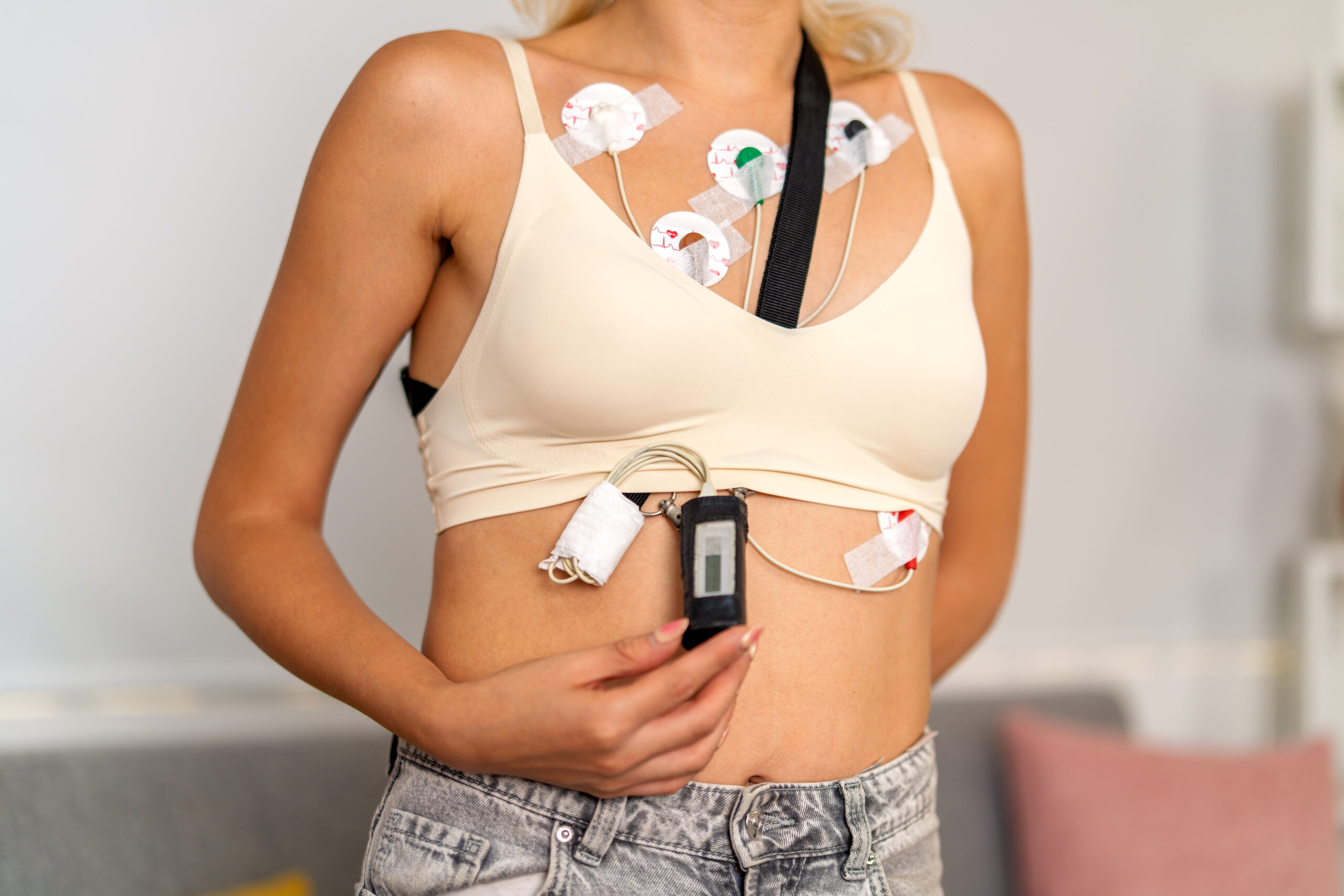
Can You Sleep Normally While Wearing a Holter Cardiac Monitor?
Many patients wonder whether they can sleep normally while wearing a Holter cardiac monitor. The short answer is yes, for the most part, you can sleep normally while wearing the monitor. However, there are a few considerations to keep in mind to ensure both comfort and accurate heart data collection.
The Holter cardiac monitor is designed to be worn for an extended period—often 24 to 48 hours—and tracks the electrical activity of your heart continuously. While it may initially feel a bit unusual to wear the monitor while sleeping, most people find that they can rest comfortably once they understand how the device works and how to manage the leads and wires.
Comfort and Sleeping Positions
Sleeping with a Holter cardiac monitor does require some adjustment, particularly regarding your sleeping position. The device itself is small and lightweight, but the electrodes attached to your chest via leads can sometimes make certain positions feel uncomfortable. The electrodes are typically attached to the chest with adhesive pads, and while they’re designed to stay in place, they can feel a little bulky if you’re used to sleeping without anything attached to your skin.
For most patients, sleeping on their back is the easiest way to avoid discomfort. However, if you prefer sleeping on your side or stomach, it’s still possible to sleep comfortably. The key is to avoid putting too much pressure on the electrodes or pulling on the leads, as this could interfere with the recording or cause the electrodes to come loose.
If you sleep on your side, it’s best to lie with the monitor facing upward so that the wires aren’t tugged or twisted. Some patients also find it helpful to adjust their pillows to keep the monitor from shifting, ensuring the wires stay in place throughout the night.
Common Issues to Look Out For
While the Holter monitor is designed to be worn during sleep, there are a few common issues that patients might face during this time. These include:
-
Skin Irritation: The adhesive used to attach the electrodes may cause slight irritation, especially if the monitor is worn for more than one night. Most patients find that the irritation is mild and goes away after the monitor is removed. If the irritation becomes uncomfortable, consult with your healthcare provider for alternatives.
-
Difficulty with Movement: Since the monitor is connected to the chest via wires, some patients may feel restricted in their movements. However, these restrictions are usually minor and can be managed by adjusting your sleeping position.
-
Wires Getting Tangled: Another common issue is the wires getting tangled while moving in sleep. This can be easily avoided by making sure the leads are properly secured and placed in a way that they won’t interfere with natural movement. Most people get used to the slight sensation of the wires after the first night.
The Impact on Sleep Quality
Overall, most patients are able to sleep with a Holter cardiac monitor without significantly affecting their sleep quality. While there may be slight discomfort initially, these issues are generally temporary, and the monitor’s ability to gather valuable heart data during sleep makes it well worth the minor adjustments. Additionally, ensuring the monitor stays properly positioned throughout the night ensures accurate results and can help clinicians diagnose heart issues that may otherwise go unnoticed.
Tips For Sleeping Comfortably With A Holter Cardiac Monitor
Sleeping with a Holter cardiac monitor doesn’t have to be uncomfortable. Here are 6 practical tips to make the experience smoother and ensure accurate data collection:
-
Secure the Wires and Electrodes
-
Before going to sleep, make sure the electrodes are securely attached to your chest and the wires aren’t too tight or tangled.
-
Loosely drape the wires across your body, especially if you’re sleeping on your side. Avoid any pressure on the leads to prevent discomfort or disconnection.
-
-
Choose the Right Sleeping Position
-
Sleep on your back for the most comfort, as it reduces pressure on the electrodes.
-
If you prefer sleeping on your side, place the Holter monitor facing upwards, and use pillows to keep the monitor in place and avoid pressure on the leads.
-
-
Wear Loose, Comfortable Clothing
-
Opt for loose-fitting tops that don’t restrict the monitor’s position. Tight clothing can cause discomfort or interfere with the electrode placement.
-
Avoid wearing anything tight around your chest or waist that might pull on the wires or shift the monitor.
-
-
Avoid Moisture and Physical Activity
-
Keep the monitor dry by avoiding showers or baths before sleeping. Moisture can damage the device or interfere with its function.
-
Refrain from vigorous movements or physical activity before bedtime to prevent the wires from shifting or becoming tangled.
-
-
Use a Pillow for Extra Support
-
Place a small pillow under your upper back to prevent the monitor from shifting during the night.
-
You can also place a pillow along your side to create a gentle barrier, preventing the monitor from being pressed or moved while you sleep.
-
-
Be Patient and Adaptable
-
It might take a little time to get used to sleeping with the Holter monitor.
-
Don’t hesitate to adjust your sleeping position or habits until you find what works best for you and ensures comfort.
-
By following these simple tips, you can sleep comfortably with a Holter cardiac monitor and ensure that the monitoring process goes smoothly, allowing for accurate heart health data to be collected.
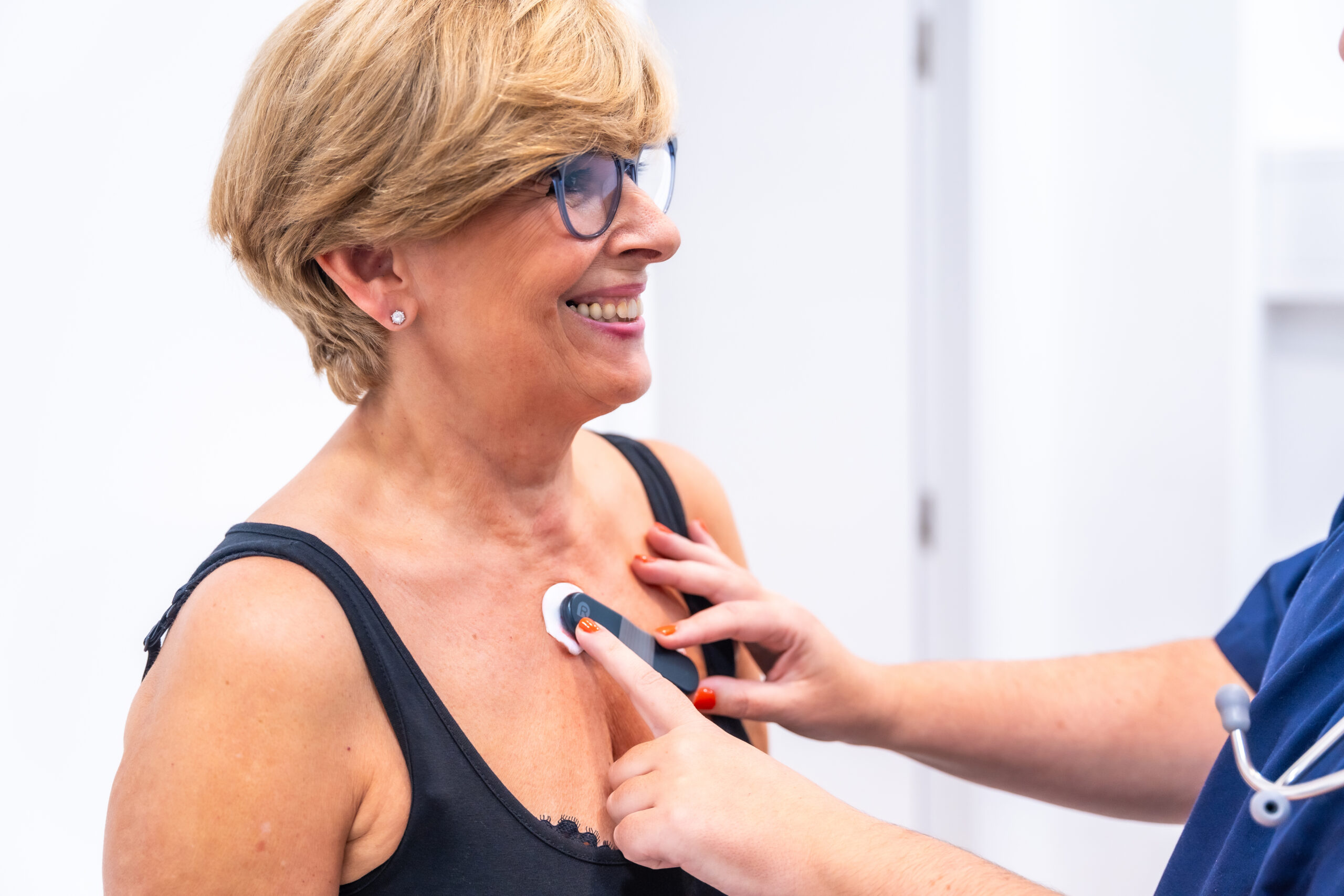
What Happens After Wearing The Holter Cardiac Monitor Overnight?
Once you’ve worn the Holter cardiac monitor for the required period, typically 24 to 48 hours, it’s time to remove the device. The data collected during that time will be crucial for your healthcare provider to assess your heart health. Here’s what to expect after wearing the monitor overnight:
-
Removing the Holter Cardiac Monitor
-
After completing the monitoring period, you will return to the clinic or office where the monitor was fitted, or a technician may remove it, depending on the setup.
-
The electrodes attached to your chest will be gently removed. This process is usually painless, though some people experience slight discomfort, especially if the adhesive sticks to body hair. The wires will be carefully disconnected, and the monitor will be returned for data analysis.
-
-
Data Review and Analysis
-
The data collected by the Holter cardiac monitor is then transferred to a computer or specialized system where it can be reviewed by a cardiac technician or healthcare professional.
-
Unlike a regular ECG, which provides a snapshot of the heart’s activity at a single moment, the Holter monitor records continuous heart activity over a prolonged period. This provides valuable insights into heart rhythms, irregularities, and other potential issues that may not have appeared during a standard test.
-
-
What Happens Next After the Data is Collected?
-
Once the data is analysed, your healthcare provider will go through the results with you. They’ll assess the heart’s rhythm, look for any abnormal activity (such as arrhythmias), and evaluate whether there are any signs of previous heart attacks, blocked arteries, or other cardiovascular conditions.
-
If abnormalities are detected, further tests or follow-up appointments may be scheduled. Your doctor may also prescribe medication or lifestyle changes depending on the findings. In some cases, you may be referred to a cardiologist for more detailed evaluation or treatment.
-
-
Follow-up Actions
-
Even if the results are normal, your doctor may recommend routine heart monitoring if you’re at risk for heart disease or other related conditions. In cases where heart irregularities are detected, long-term follow-up monitoring may be suggested, including periodic Holter monitoring or other diagnostic tests.
-
It’s also possible that your doctor might suggest additional tests like stress tests, echocardiograms, or imaging to further assess the heart’s condition based on your results.
-
-
When to Expect Your Results
-
The timeframe for receiving your results will vary depending on your clinic’s workflow. Some clinics provide the results the same day, while others may take a few days to complete the analysis.
-
Once the data is interpreted, your clinic will either contact you with the findings or schedule a follow-up appointment to discuss the results in person.
-
Wearing a Holter cardiac monitor overnight gives both you and your healthcare provider important insights into your heart’s function. It helps detect underlying heart issues, even if you don’t experience noticeable symptoms, and allows for better-targeted treatment and follow-up care.
The Importance Of Wearing A Holter Cardiac Monitor For Your Heart Health
Wearing a Holter cardiac monitor provides an essential tool in understanding your heart health, particularly when symptoms are infrequent or difficult to detect during a short clinical visit. The extended monitoring period, typically lasting 24 to 48 hours, gives healthcare professionals valuable insights into the heart’s activity, even during sleep. This comprehensive approach helps identify heart irregularities like arrhythmias, which could otherwise go unnoticed, allowing for quicker diagnosis and timely treatment.
For patients, sleeping with a Holter cardiac monitor ensures that potential heart issues are not overlooked. The monitor tracks heart rhythms continuously, providing a clearer picture of your heart’s function across various activities, including rest. This is particularly important for individuals who experience symptoms such as dizziness, palpitations, or unexplained fatigue, which might not appear during a single visit to the clinic. Having a Holter monitor in place ensures that even subtle changes in heart rhythm are captured, providing a more accurate diagnosis.
At Crane Cardiac Diagnostics, we understand the significance of Holter cardiac monitoring in offering precise and reliable heart health assessments. Our expert technicians provide quick, accurate analysis of your heart activity, allowing your healthcare provider to make informed decisions about your treatment plan. Whether you’re experiencing symptoms or simply need routine monitoring, we offer high-quality services designed to improve patient outcomes.
If you’re looking to improve your clinic’s cardiac health services or need Holter monitoring for your patients, contact Crane Cardiac Diagnostics today. We’re here to support your clinic with fast, professional cardiac testing services that ensure optimal care.
